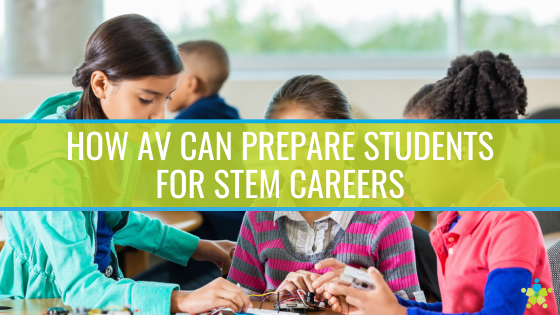[vc_row][vc_column][vc_column_text]U.S. students are having trouble competing on the world stage in math and engineering. According to data collected by the National Science Board, U.S. students' math and science scores are in the middle of the pack globally, and dead last among G-7 countries, China and Korea. This poor performance means America's students are at risk of falling behind in the global, tech-charged economy.
The answer is better STEM education for K-12 children, and that can be achieved with AV solutions. AV technology fits perfectly into K-12 STEM initiatives, as they can engage students of all ages and relate complex mathematical and scientific concepts in a compelling way.[/vc_column_text][vc_column_text]
Why is K-12 STEM Education Important for Students?
The benefits of STEM education go beyond career preparedness. In addition to giving students a better footing in the workforce, K-12 STEM can help students build the following skills:- Problem solving - STEM lessons require students to solve complex problems that they don't encounter in other subjects. These problems require strategizing, planning, teamwork, and execution to handle, and this requires students to think about problems in-depth. STEM lessons don't just transmit knowledge to students, they show people how to think for better problem solving.
- Creativity - While STEM is math and science heavy, that doesn't mean there isn't room for creativity in STEM. Some forms of engineering, like robotics for example, require students to stretch their imaginations and produce unique solutions for unique problems. In doing so, children get better at tackling a wider variety of obstacles with a greater variety of tools - a skill the modern fast-paced economy demands.
- Collaboration - Many STEM projects require teamwork to execute properly. Students must work together to visualize solutions, plan out execution, divide tasks among the team and collaborate with each other to solve issues that come up during the process. In this way, STEM content provides opportunities for individuals to function as a group. Something that professionals are expected to do in their jobs.



